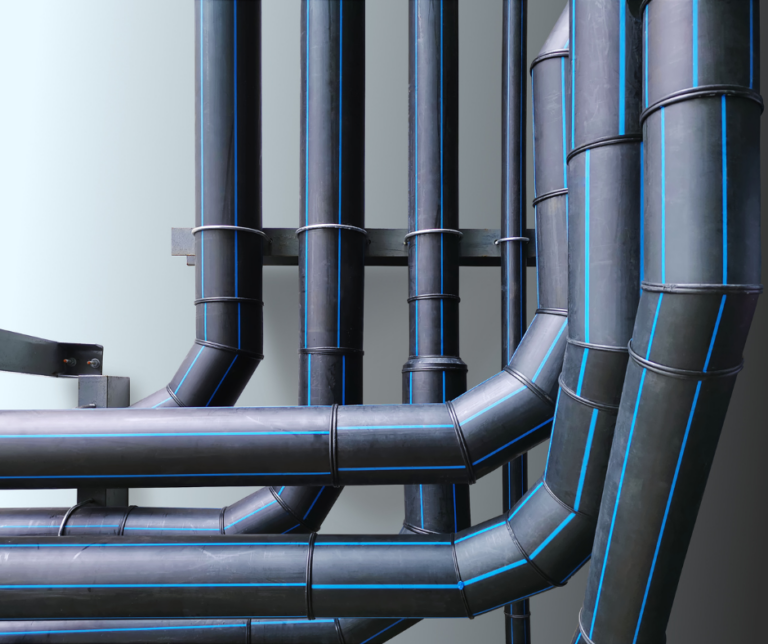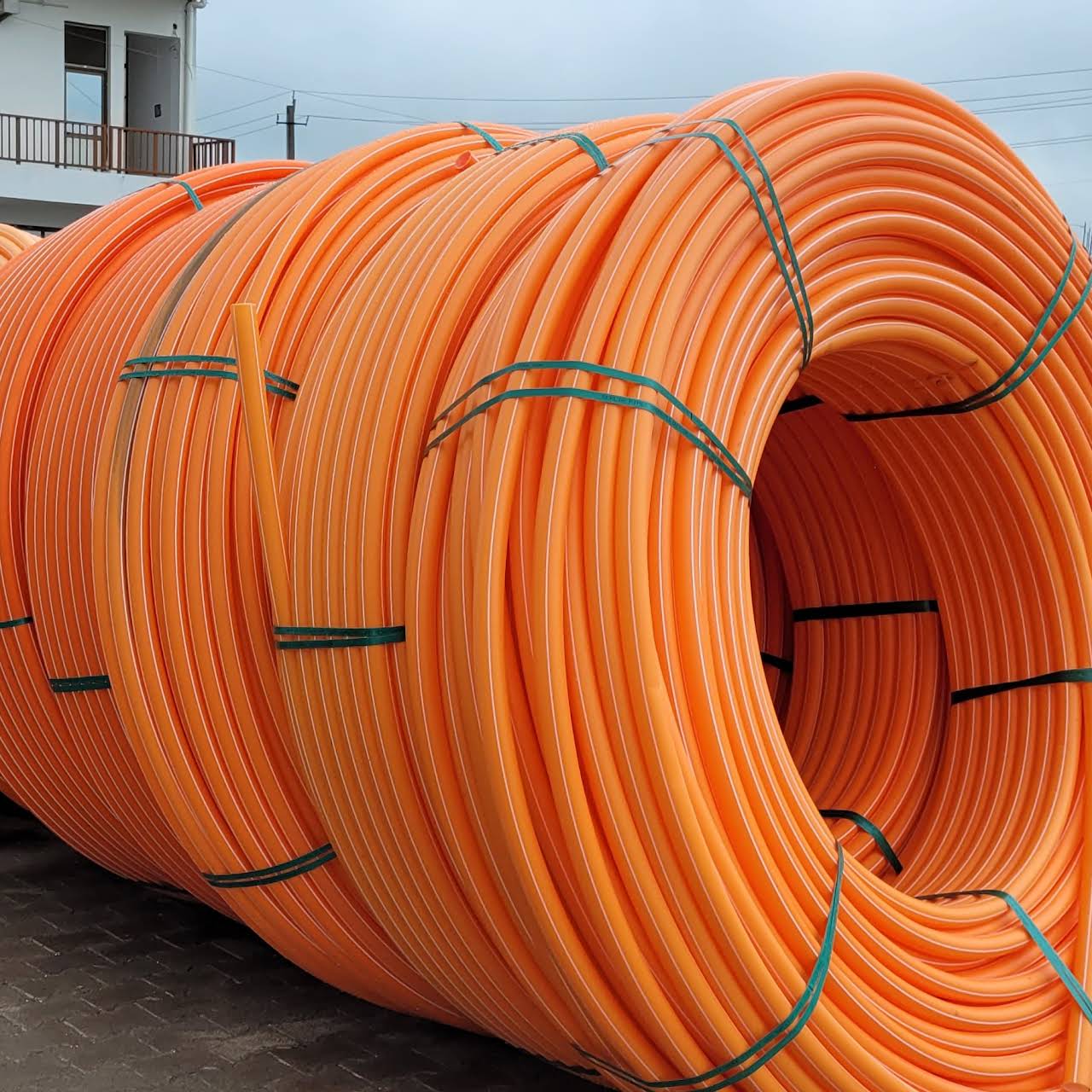Check Out the Production Refine Behind High-Quality HDPE Pipeline and Its Applications
The manufacturing procedure of premium HDPE pipelines is elaborate and systematic. It starts with the selection of basic materials that boost efficiency. Following this, ethylene undergoes polymerization to create material, which is then shaped with extrusion. Quality assurance is vital, making sure that the last product meets strict requirements. Nonetheless, the trip of HDPE pipelines does not finish with manufacturing. Their applications across different markets expose a more comprehensive importance worth taking a look at.
Understanding HDPE: Features and Advantages

High-density polyethylene (HDPE) is a flexible polycarbonate recognized for its durability and resistance to different ecological factors. This material shows exceptional tensile toughness, making it suitable for requiring applications. Its low-density structure adds to a lightweight item, facilitating ease of taking care of and installment. HDPE likewise showcases amazing resistance to chemicals, which minimizes destruction when subjected to severe compounds.
The material's reduced moisture absorption further boosts its durability, making it optimal for use in pipes and storage tanks. In addition, HDPE is immune to ultraviolet (UV) radiation, making sure that items preserve their integrity even when revealed to sunlight. Moreover, its adaptability enables the production of elaborate forms without jeopardizing toughness. The environment-friendly nature of HDPE, typically originated from recycled products, adds to its allure, promoting lasting methods in manufacturing. In general, these residential properties and benefits make HDPE a recommended option for various industrial and consumer applications.
Raw Product Selection for HDPE Manufacturing
The option of raw products for HDPE production is important to validate the last item meets the desired specs and top quality standards. High-density polyethylene (HDPE) is mostly produced from polymerized ethylene, obtained from fossil gas such as gas or petroleum. The high quality of these feedstocks considerably influences the mechanical and thermal homes of the last HDPE.
Ingredients also play a significant function in boosting HDPE's performance, including anti-oxidants, UV stabilizers, and colorants, which enhance sturdiness and resistance to ecological aspects. The choice process should think about not only the chemical structure of the raw products however likewise their processing characteristics to guarantee effective manufacturing.
The sourcing of raw products ought to prioritize sustainability and compliance with ecological policies, as liable techniques are imperative in today's market. Inevitably, cautious resources option lays the structure for producing high-quality HDPE pipes appropriate for diverse applications.
The Extrusion Process: Forming HDPE Pipeline
The extrusion procedure plays an important duty fit HDPE pipes, beginning with meticulous product prep work methods that guarantee ideal circulation and consistency. Just as crucial is the design of the die, which straight influences the final measurements and surface area high quality of the pipe. Together, these elements contribute significantly to the effectiveness and top quality of HDPE pipe manufacturing.
Material Preparation Techniques
Reliable manufacturing of HDPE pipes starts with precise product preparation strategies, specifically the extrusion procedure. During this stage, high-density polyethylene resin is first dried to eliminate moisture, making sure optimal flow qualities. The material is after that fed into the extruder, where it undertakes heating and melting, changing into a thick state. This home heating process is thoroughly managed to keep the product's integrity and performance. The molten HDPE is required via a die, shaping it right into a continuous pipeline kind. Proper temperature level administration during extrusion is important, as it directly influences the product's properties and the final item top quality. As soon as shaped, the HDPE pipeline is cooled down and reduced to defined sizes, prepared for subsequent handling and applications.
Die Layout Value
Precision in die style plays an essential role in the extrusion process of HDPE pipes. The die serves as the final shaping tool, directly influencing the pipeline's dimensions, wall density, and surface area finish. A properly designed die guarantees consistent material circulation, minimizing flaws such as abnormalities and weak places. The geometry of the die should be maximized to fit the specific buildings of HDPE, including its viscosity and thermal actions during extrusion. Additionally, the cooling price of the material as it goes through the die can markedly affect the pipe's structural honesty. Investing in innovative die technology is vital for manufacturers intending to produce premium HDPE pipelines that meet sector requirements and client expectations.
High Quality Control Steps in HDPE Production
Various aspects influence the top quality of HDPE pipe production, efficient quality control steps are essential to assure uniformity and integrity in the last product (hdpe pipe suppliers Midland TX). Trick quality assurance methods include extensive material evaluation, confirming that the raw polyethylene satisfies recognized requirements for pureness and thickness. Throughout the extrusion process, criteria such as temperature, stress, and cooling time are closely checked to maintain dimensional accuracy and structural honesty
Furthermore, post-production testing is vital; makers frequently carry out hydrostatic tests to assess the pipe's toughness and resistance to pressure. Aesthetic assessments for surface defects additionally boost quality control. Qualification from relevant standards companies, like ASTM or ISO, provides an additional layer of reputation. By applying these complete quality assurance steps, producers can reduce issues, boost performance, and make sure that the HDPE pipes fulfill the specific needs of various applications, inevitably leading to client satisfaction and depend on in the product.
Applications of HDPE Pipeline Across Industries
HDPE pipes are made use of throughout numerous markets due to their resilience and convenience. In water distribution systems, they guarantee effective delivery, while in wastewater administration, they supply dependable remedies for waste transport. Additionally, agricultural watering networks gain from HDPE's resistance to deterioration and versatility, making it an optimal selection for contemporary farming methods.

Water Distribution Equipments
A substantial variety of industries count on high-density polyethylene (HDPE) pipes for effective water distribution systems. Recognized for their durability and resistance to deterioration, HDPE pipes are widely utilized in metropolitan supply of water networks, farming irrigation, and commercial applications. Their lightweight nature promotes easy handling and installment, reducing labor costs and time. In addition, HDPE pipelines can fit numerous stress levels, making them appropriate for both low and high-pressure systems. Pipe Manufacturing Midland TX. The flexibility of the product enables seamless assimilation into existing infrastructure, lessening the need for considerable excavation. HDPE's resistance to chemical leaching guarantees that the water supplied remains secure and tidy, making it a perfect selection for maintaining the quality of potable water across various fields.
Wastewater Administration Solutions
Reliable water circulation systems likewise lead the way for innovative wastewater monitoring options, where high-density polyethylene (HDPE) pipelines play a considerable duty. Renowned for their sturdiness and resistance to deterioration, HDPE pipes are ideal for moving wastewater in various setups. Their versatility allows for easy installment in complicated atmospheres, minimizing the need for comprehensive excavation. In addition, HDPE's smooth indoor surface lowers friction, improving circulation prices and efficiency. These pipelines are likewise resistant to chemical leaching, go to this website guaranteeing that pollutants do not endanger Website the surrounding environment. Industries, municipalities, and treatment centers increasingly depend on HDPE pipelines for their reliability and durability, making them a recommended option for modern-day wastewater administration systems. This flexibility highlights the crucial value of HDPE pipes throughout numerous applications.
Agricultural Watering Networks
Agricultural watering networks benefit considerably from making use of high-density polyethylene (HDPE) pipelines, which supply reliable and dependable water shipment to plants. HDPE pipelines are light-weight, making them easy to transport and mount, while their flexibility enables for different setups in varied terrains. These pipes show superb resistance to corrosion, chemicals, and UV radiation, guaranteeing longevity in harsh farming atmospheres. In addition, their smooth interior surface area minimizes friction loss, enhancing water circulation and lowering power prices connected with pumping. The longevity of HDPE pipes, commonly exceeding 50 years, contributes to lower maintenance and substitute expenditures. Farmers progressively count on HDPE pipelines to boost irrigation efficiency and promote lasting farming techniques, eventually leading to enhanced plant returns and resource conservation.

Future Patterns in HDPE Pipe Modern Technology
As the demand for lasting and reliable framework expands, advancements in HDPE pipeline innovation are poised to change numerous industries. Arising patterns consist of the assimilation of clever technologies, such as sensing units and IoT capacities, which help with real-time tracking of pipeline problems, lowering maintenance prices and stopping leakages. In addition, the development of innovative manufacturing techniques, such as 3D printing, is making it possible for the production of complex, customized pipeline layouts that accommodate specific job requirements.
The emphasis on recycling and circular economic climate practices is driving the development of HDPE pipelines made from recycled materials, boosting sustainability. Enhanced jointing approaches, such as electro-fusion and mechanical fittings, are also boosting installation efficiency and integrity. Finally, the growing emphasis on ecological policies is pushing producers to adopt greener production processes, making sure that HDPE pipelines not just fulfill industry standards yet likewise foster an even more lasting future for framework development.
Frequently Asked Inquiries
Exactly How Does HDPE Compare to Various Other Plastic Products?
HDPE outmatches several other plastic materials relating to sturdiness, chemical you could try here resistance, and adaptability. Its reduced thickness and high tensile stamina make it perfect for various applications, typically going beyond options in both performance and long life.
What Are the Ecological Effects of HDPE Manufacturing?
The environmental effects of HDPE manufacturing include greenhouse gas exhausts, energy usage, and possible air pollution from manufacturing procedures. In addition, incorrect disposal can bring about soil and water contamination, raising worries concerning long-lasting eco-friendly results.
Can HDPE Piping Be Recycled?
Yes, HDPE pipelines can be recycled. Several facilities approve used HDPE for processing, changing it into new products. This recycling adds to sustainability initiatives, lowering plastic waste while conserving resources and energy in the production cycle.
What Is the Lifespan of HDPE Water Lines?

Just How Do Temperature Variants Influence HDPE Pipe Efficiency?
Temperature level variations considerably influence HDPE pipeline performance, affecting flexibility and stamina. High temperature levels can result in softening, while reduced temperatures might trigger brittleness, ultimately affecting the pipeline's sturdiness and viability for numerous applications in varied settings.